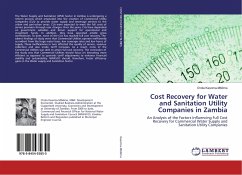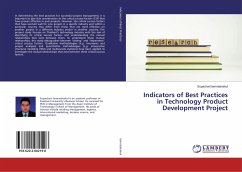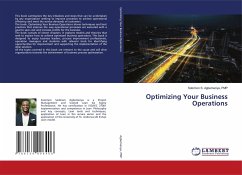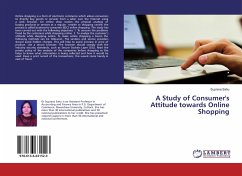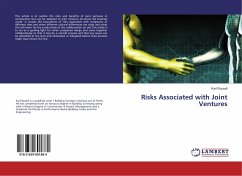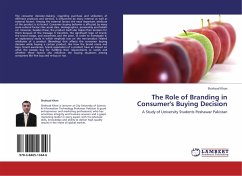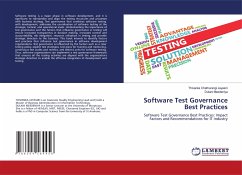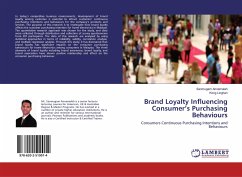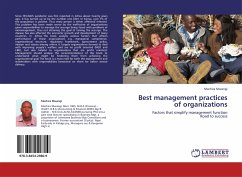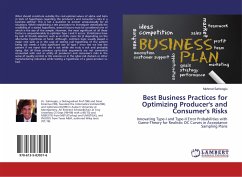
Best Business Practices for Optimizing Producer's and Consumer's Risks
Innovating Type-I and Type-II Error Probabilities with Game-Theory for Realistic OC Curves in Acceptance Sampling Plans
Versandkostenfrei!
Versandfertig in 6-10 Tagen
24,99 €
inkl. MwSt.

PAYBACK Punkte
12 °P sammeln!
What should constitute suitably the cost-optimal values of alpha and beta in tests of hypotheses regarding the producer's and consumer's risks in a business setting? This is not a question to answer unequivocally for all situations. When establishing a test procedure to investigate statistically the credibility of a stated hypothesis, several factors must be considered one of which is the size of the sample. However, the most significant of all these factors is unquestionably to optimize Type I and II errors. Statisticians have by rule of thumb selected, such as =0.05, none for beta depending ...
What should constitute suitably the cost-optimal values of alpha and beta in tests of hypotheses regarding the producer's and consumer's risks in a business setting? This is not a question to answer unequivocally for all situations. When establishing a test procedure to investigate statistically the credibility of a stated hypothesis, several factors must be considered one of which is the size of the sample. However, the most significant of all these factors is unquestionably to optimize Type I and II errors. Statisticians have by rule of thumb selected, such as =0.05, none for beta depending on the alternative hypothesis at hand. Although, common logic usually played a major role such as in the case of testing null hypothesis of the patient being sick needs a fairly significant size of type I error lest we lose the patient if we reject that she is sick while she truly is sick and probably dying. But all these previous up-to-date arguments are not somewhat connected with cost or utility of producer's and consumer's risks in the sense of quality control or life sciences or in the cyber-risk domain or other manufacturing industries while testing a hypothesis of a good product vs. bad.



